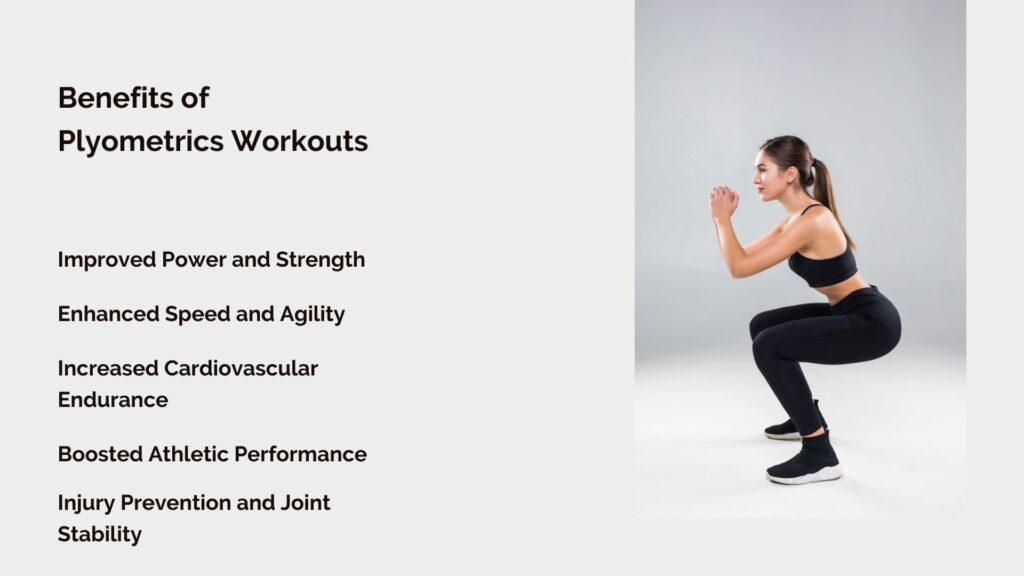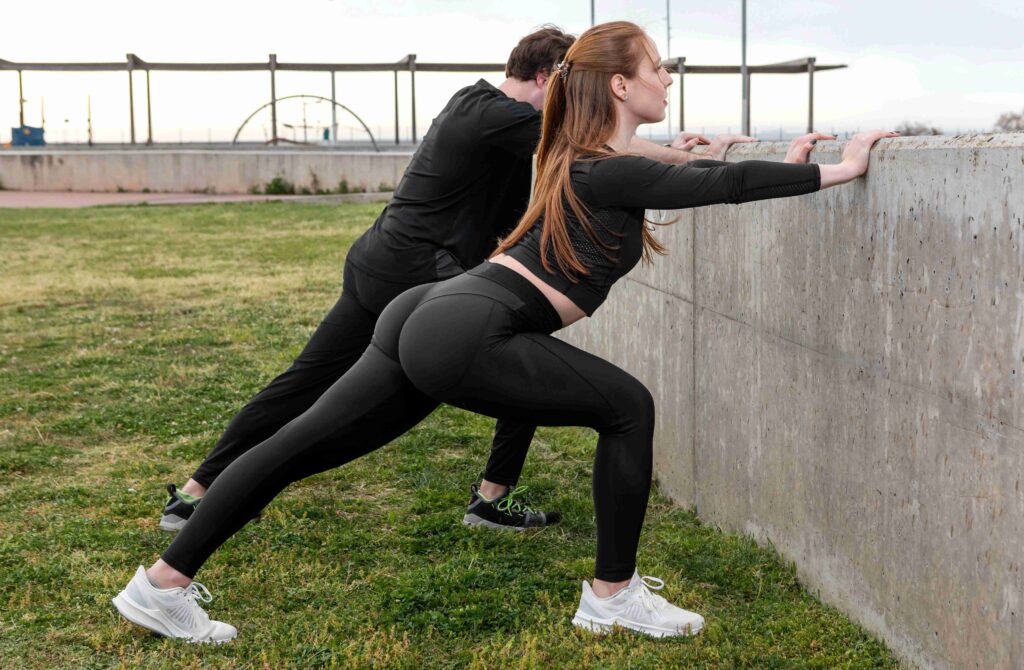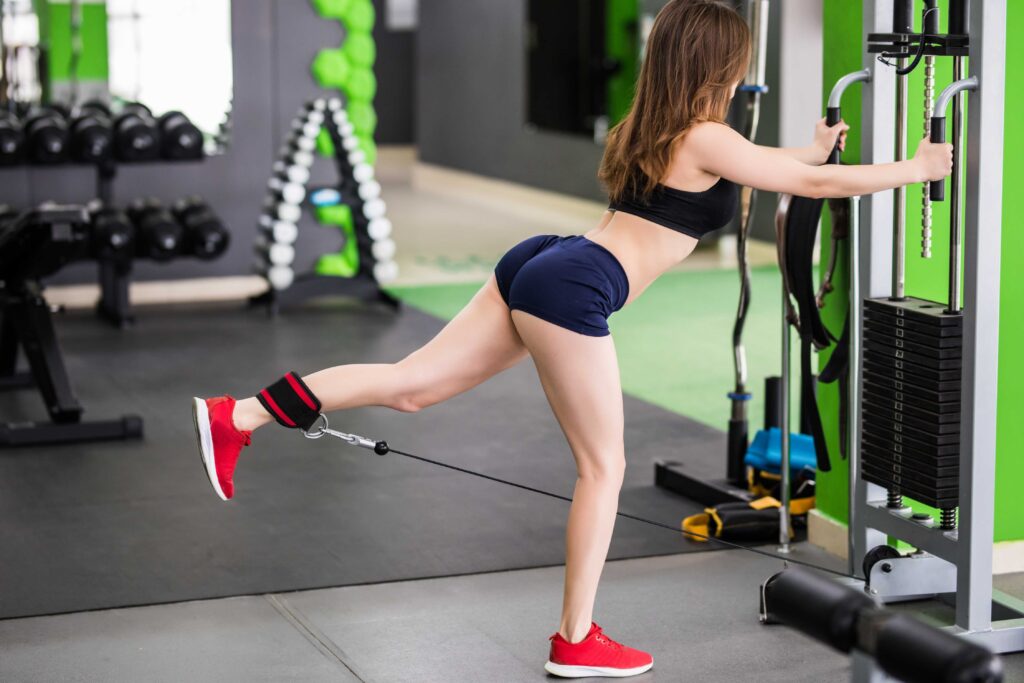Plyometrics workouts, or “jump training,” which are endurance workouts are high-intensity workouts aimed to endure strength, power, and speed through fast explosive movements. These workouts are not only used by the athletes but also by the people who are active in their exercises, and those who want to improve their cardiovascular efficiency overall. Here we give a complete overview of plyometrics workouts, including the noob to the quality onces, their advantages, and the way calisthenics compare.
What is Plyometrics?
Plyometrics, a form of strength and endurance training, is achieved by the technology of explosive stress on muscles which are used to the maximum degree and, in turn, become physically stronger by the work done with them. This type of workout is also good for sports that have jumping as their main skill, such as basketball, sprinting, and volleyball. Plyometrics entails activities such as hopping, bounding, and vertical jumping that aim to result in the high-speed muscle contractions of the body which are the main reasons for the muscles to become flexible and strong.
The idea of plyometrics is derived from the “stretch-shortening cycle,” which takes advantage of the ability of muscles to give back the energy put on to get more force. Surgery Energy allows a person to have a more powerful movement by storing energy in the muscles and using the stored energy by stretching and quickly contracting them—like bent knee jump.

Benefits of Plyometrics Workouts
Considering its all relatively minimal equipment one can easily do it, indeed plyometrics workouts are rich in benefits and doing them can be a profitable enrichment of your exercise regimen. Because of the given examples, you can undoubtedly see how plyometrics workouts can elevate you to the pinnacle. In other words, not only does the development of fast-twitch fibers occur due to rapid movements, but the production of stronger muscle is also the secondary outcome of explosive exercises. Specifically, these motions are so specified that before you realize it, they are already completed!
Improved Power and Strength
Increased power is the primary advantage of plyometrics workouts. In typical training, slow-twitch fibers are the first to be affected when you train them. The explosive nature of these exercises strengthen fast-twitch muscle fibers, which are responsible for fast, high-intensity, short-duration activities. As a result, you will be able to sprint, jump, or lift more effectively than before. For sports training, the use of plyometrics workouts would be beneficial.
Key Plyometrics Workouts For Power:
- Box Jumps: Station yourself in front of the box that is situated, enthusiaatically leap onto the box, and softly descend.
- Depth Jumps: Stand over a box and, upon landing, instantaneously jump as high as you can.
- Squat Jumps: Bend your knees and squat a lift-off where you forcefully extend your arms to the ceiling.
If you aim to raise your muscular strength further, one more option for you is to also include Mastering Functional Strength Training: Benefits & Tips in your training schedule for the best results.
Increased Speed and Accuracy
Plyometrics workouts stimulates the parts of the brain and muscles responsible for motor skills, thus improving neuromuscular coordination, which results in stronger and faster movement. Practicing fast movements all the time, you will surely notice improvements in your overall maneuverability and reflexes. The principle of plyometrics workouts is to enhance explosive muscular powers through jumps or bounding which in turn highly contribute to running and quick changes of direction in sports like basketball and soccer.
Plyometrics Workouts for Agility:
- Lateral Bounds: One-legged jump sideways from left to right, that is, land on one footoversway.
- Skater Jumps: Copy the sideways motion of a speed-skater ading leg’s power and balance, your body will become more agile and flexible.
- Tuck Jumps: Ascend and bring your knees to your chest while landing softly.

Increased Cardiovascular Endurance
Although plyometrics workouts are basically designed to build power, they also offer a tough cardiovascular workout. The fast, repetitive movements make your heart beat faster which in turn contributes to cardiovascular endurance. If you want to expose your body to a real fat burning and heart healthy exercise, then plyometrics workouts is an efficient option.
The plyometrics workouts will be most effective if you add the cardio exercises that are covered by Cardio Exercises at Home: Your Ultimate Guide to Boosting Fitness to make a complete balanced workout.
Increased Performances in Sports
With the plyometric workouts happening very quickly, they lead to the player getting stronger, faster, and generally more powerful which helps a lot of the sport that require speed, agility, and power. Profession athlete or amateur player from the world of all kinds including poker can greatly benefit from these exercises in their training.
Injury Prevention and Joint Stability
Plyometrics workouts can greatly reduce injury risks by promoting joint stability. This is greatly helped by plyometrics, which allows one to engage in fast, repetitive movements through the explosive contractions of the muscles. That way, you can secure the joints that are endangered by the tendons and the ligaments, which are some of the effects that these exercises are prone to. But still, one needs to adhere to correct body form to minimize the possibility of injuries, mainly in high-impact exercises.
According to The National Strength and Conditioning Association, a study involving plyometric workouts, which was conducted in the right way, established the fact that it helps to improve the joint strength and to diminish the occurrence of injury in athletes and all those who are involved in athletics.
Plyometrics Workouts for Beginners
If your first venture is in plyometrics workouts, go for low doing simple workouts first, that handle your foundational level strength and coordination in the process. Initial plyo stuff should be a bit easier as you will want to learn new skills and movements first.
| Exercise | Instructions | Reps |
|---|---|---|
| Jump Squats | Bend your knees and lower your body in a squat, then explode into the air and land softly. | 10-12 reps |
| Step-Up Jumps | Leap up on a flat surface, then tumbling down. | 10-12 reps |
| Standing Broad Jumps | Spring ahead and land on the ground, making sure to squat and spring at the same time. | 8-10 reps |
For further beginner-friendly exercises, you can pursue bodyweight exercises that are included in Effective Calisthenics Workout Routines for Everyone, a book of programs targeting specific muscle groups and Workout Routines for Men and Women through Calisthenics which are home-based bodyweight workout routines right on your living room or balcony.
Advanced Plyometrics Workouts
After the basics have been mastered, one can proceed to more intense and complicated plyometrics workouts. So if you feel confident enough, try these plyometrics workouts to improve your lower-body power and speed.
| Exercise | Instructions | Reps |
|---|---|---|
| Depth Jumps | Taking away the potential for repetitive stress injuries of the leg about 90 weakened the recovery time. | 8-10 reps |
| Box Jumps | Get on a box, now slowly get down. | 10-12 reps |
| Lateral Bounds | Jump to the side, balancing yourself on the other foot. | 8-10 reps |
One of the brilliant ideas is to add variation to the jumps-for-height routine with a bungee cord. You are advised to go through our article about How Resistance Bands Can Enhance Your Fitness Routine. Expert Advice for more.

Plyometrics vs Calisthenics:
While both plyometrics workouts and calisthenics workouts exercise the body without using added weight, they differ because the forms, exercises and intensity of both are different. Let’s break down the key distinctions between these two popular fitness styles.
Intensity and Impact
| Plyometrics | Calisthenics |
|---|---|
| Plyometrics workouts is a low-weight, fast explosive exercise focus, which must be characterized by powerful explosive movements to speed up. | The calisthenics program, on the other hand, relies on more slow movement workouts that are very controlled and with less pressure on the body that is made to help endurance and total strength. |
| Example : Box jumps (rapid, high-intensity movement) | Example : Push-ups (slower, controlled movement for building strength). |
Training Goals
Where plyometrics workouts are primarily designed for power lifting, speed, and agility, calisthenics concentrate on endurance and overall muscle toning better. For athletes plyometrics workouts are ideal to improve performance and calisthenics is ideal for those who want to lose weight and tone up.
For more information regarding calisthenics and its peculiarities, refer to our article Effective Calisthenics Workout Routines for Everyone.
Risk of Injury
Since plyometrics is a high-impact exercise, if done with improper form, there is a high risk of injury. Calisthenics, on the other hand, are less intense and safer to perform by beginners or injured athletes.
Plyometrics for Enhanced Full Body Power
Plyometrics workouts, such as a medicine ball chest pass, are often included in a fitness workout to tend muscle groups in place. Plyometrics is indeed a sport that fits in big-time if you wanna be strong and flourish at all the things you do. Let’s explore two key exercises: Cable Kickbacks for the lower body and Medicine Ball Chest Pass for the upper body.
Cable Kickbacks for Lower Body Power

Cable kickbacks are not only effective for targeting the glutes but also play a task of ballistic power-generation in the body. The use of resistance bands or cables helps personalizing a workout where you mimic a weightless cable swinging while increasing muscle tension at the same time by challenging your muscles, stability, and control of movement.
Benefits of Cable Kickbacks in Plyometrics:
- Strengthens the Glutes: The function of your gluteal muscles naturally to the pelvis is increased by initiating the movement through this exercise. It is a distinct case of muscle strength in this area and at the same time, the muscle undergoes alterations that lead to the betterment of your abilities in various activities.
- Enhances Explosiveness: Sinewy muscle flexes like a kickback will train your body to produce power in a fast and efficient manner, then you will jump higher or run faster, which are the benefits of such activities.
- Improves Stability and Balance: The non-symmetry of leg kicks requires the person to constantly shift the weight on the angled leg and the beam pen. One-legged cable kickbacks are useful as they focus on your midsection and weak muscles that are responsible for balance which are needed in life fitness.
Medicine Ball Chest Pass for Upper Body Strength

The medicine ball chest pass is an excellent plyometric exercise that focuses on building upper body strength and power. This explosive movement engages multiple muscle groups, including the chest, shoulders, and triceps.
Benefits of Medicine Ball Chest Pass in Plyometrics:
- Builds Explosive Upper Body Power: The chest pass requires a quick and forceful movement, training your muscles to generate power rapidly.
- Enhances Coordination: This exercise improves coordination between the upper and lower body, vital for many functional tasks.
- Improves Core Stability: By engaging your core while performing the chest pass, you develop better stability and strength, contributing to overall functional fitness.
How to Incorporate Plyometrics Workouts into Your Routine
You can arrange a plyometrics session either as a standalone occasion or as part of another training style like HIIT or circuit training. Here is the way to get used to plyometrics workouts for the week to come and get the results you seek:
- Frequency: Set at least 2-3 times of plyometric workouts per week so that you can have a sufficient gap in between sessions.
- Duration: Limit each session to between twenty to thirty minutes, depending on fitness level.
For a comprehensive outline of circuit training, browse The Ultimate Guide to Circuit Training Workouts: Benefits, Weight Loss for optimal training productivity.
Conclusion
Plyometrics workouts is great for those who want to up their game in terms of power, speed, agility, and, of course, fitness. No matter whether you are a beginner or a pro athlete, you can modify plyometrics to fit your own workout plan. Add these jumping exercises to your program or your regular functional resistance exercises to ensure you are a well-balanced athlete. It is crucial to your workout routine that you maintain consistency, so, at first, start slowly, find the right technique, and only as you gain strength progress to the harder exercises.
For the more detailed workout guides and the fitness advice, you can check out other articles such as HIIT Workouts at Home: The Best Equipment and Exercises and Affordable and Best Home Gym Equipment for Every Space.
Are you willing to become an athlete with the best abilities? Start doing plyometrics workouts very soon with your daily life routine!
Look no further than high-ranked health and fitness sources for more research-based insights on this type of exercise. One of the good sources is absolute the ACE Fitness association.
FAQ’s
What is plyometrics?
Plyometrics is a form of high-intensity workout which concentrates on quick, explosive movements like leaps and bounds to strengthen muscle power, speed, and strength.
What are plyometrics?
Plyometrics used to be exercises to achieve power through the lengthening and contracting of muscles; in general, it is sports performance improvement practiced by athletes to gain burst speed and strength.
How often should you do plyometrics?
One can try plyometrics according to the instructions situation; it is recommended to them to do plyometrics just 2-3 times a week, but the actual time varies on the basis of their cardio-respiratory endurance and rate of recovery.
How often should I do plyometrics?
It is advised that you do plyometrics two or three times a week and see more amelioration with only a proper recovery day between the sessions this way.
What do plyometrics do?
Plyometrics is an effective way to train muscles through the rapid response and thus, it helps in the contraction of the muscles thereby resulting in power production, improvement in speed, better performance in various athletics types, and the whole coordination. It is also important to practice hurdling and other related activities.
How many times a week should I do plyometrics?
It is better to do plyometrics twice or thrice a week are the point of fatigue but not overtraining.
What is plyometrics training?
Plyometrics is a form of workout training that involves rapid, forceful movements designed to force muscles to contract in opposition and thus improve their strength and response speed.
How often to do plyometrics?
It is preferable to perform plyometric exercises 2 to 3 times a week based on recovery to evade overtraining and growth of muscles.
How many times a week should you do plyometrics?
You should ideally do plyometrics 2 to 3 times per week, allowing for adequate rest between sessions.
What are plyometrics exercises?
Plyometrics exercises are a collection of movements such as jump squats, box jumps, burpees, and lateral bounds, all specifically designed to boost explosive muscle power.
How to do plyometrics?
To do plyometrics, first, you must try a warm-up, then go to exercise moves such as squat jumps, box jumps, or burpees, which involve a series of strong, explosive exercises. Finally, make sure you don’t get on between the sets to escape from vulnerability.
How many sets of plyometrics should I do?
A usual set of plyometric exercises usually comprises 2-4 such sets, and each set consists of 6 to 10 repetitions of a particular exercise.
How to program plyometrics?
When programming plyometrics, integrate a mixture of lower-body and upper-body moves, observe proper recovery periods, and slowly increase workload.


4 comments
Comments are closed.